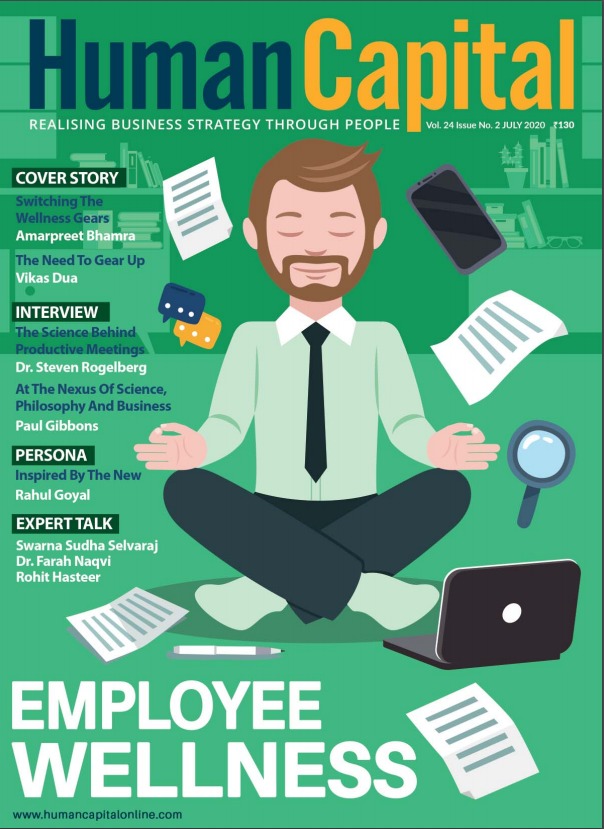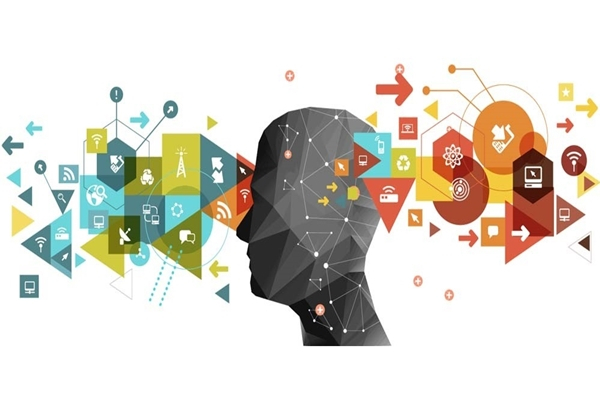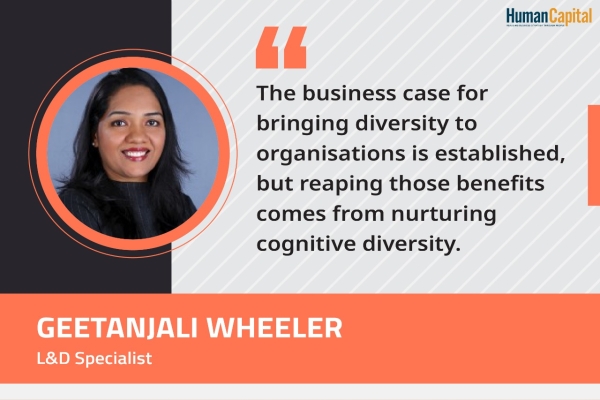Given that resources are scarce for organisations, it is therefore critical for them to measure the efficiency and effectiveness of learning and skill development initiatives.
The pace of technology, demographic and socio- economic disruption is fast transforming industries and business models. Moreover, CEOs around the world are wary of slow down amid the rapid speed of execution today. We all know that highly engaged and skilled employees deliver superior business results. Given that resources are scarce for organisations, it is therefore critical for them to measure the efficiency and effectiveness of learning and skill development initiatives.
“If you cannot measure it, you cannot improve it.” — Peter Drucker.
Organisations are keen to see the ROI on their learning spend; however, only 4% of the CEOs are able to see the ROI. More than half of the learning interventions go in vain as employees do not apply the learning in their jobs. This inefficiency hinders an organisation’s ability to raise performance, shift behaviours, and contribute to any real business impact.
Ten simple steps to improve the learning health
1. Align your learning strategy with business strategy
A clear business need is often missing from many programs that are initiated by the learning and development (L&D) team. As a first step, align your learning strategy with business priorities. Allocate budgets and ensure your plans mirror long-term and short term business priorities. Link spend on learning to performance metrics such as productivity, quality, retention, compliance, and customer satisfaction; even further, make sure there is an explicit agreement between the business and the learning team.
2. Optimise the learning portfolio
Articulate the few critical priorities and must-win battles to which the company and CEO are committed over the next three to five years. Tailor-make learning initiatives (content strategy and development, program design, courses and certifications, target audiences and personas, etc.) to deliver these strategic priorities. Minimise scrap learning and make a clear shift to get to near-zero learning inventory.
3. Map and define stakeholder value
Map key stakeholders in the organisation and understand how they see value, define and set objectives at different levels for reaction, training, application, impact and ROI, such that there is clarity and a shared understanding in what is expected of each of them, including experience designers, curators, instructors, employees, managers and executive sponsors.
4. Design for relevance, application and impact
Design L&D initiatives for results. Establish “relevance” for the learner, followed by opportunities to “apply” the knowledge gained. Select the right metrics to measure the business impact of applied learning and use the appropriate technology stack, tools and templates to ensure that every learner and each different stakeholder is enabled and provided the right level of support in this journey.
“Design, Execute, and Sustain to establish Relevance, Application and Impact.”
5. Put experience above all else
Experience embodies a “consumerised” approach that is hyper-personalised and multimodal. The modern-day learner wants the freedom to consume knowledge when, where, and how they want from a wide range of content resources, tailored to their learning needs, style, preferences and interests.
Design micro experiences tailored to learners’ preferences, interests, and needs with easy access to content that is displayed in a familiar, easy-to-navigate pattern that appeals to them. Content should be contextual and aggregated from a variety of content repositories, both internal and external.
Leverage the power of AI to pull data quickly and easily, sort through demographics like age, gender, culture, level in the organisation, educational background, previous learning experiences, patterns of employee behaviour, learning needs and goals. Use these insights to create intelligent and smarter-positioned content that’s adaptive, intuitive, responsive to a learner’s personal journey, and provides a great learner experience.
6. Get agile
Anticipate the needs of the business and employees proactively, and shorten the time and distance required between production, consumption, and application of knowledge. L&D interventions should be both effective and efficient—backed by the right level of investment, designed and aimed at delivering the right business results in the right time frame.
7. Set up a knowledge network and exchange
Learning processes involve the aggregation, creation, curation, collection, interpretation, dissemination and application of knowledge. These include experimentation to develop and test new products and services; intelligence gathering to keep track of competitive, customer, and technological trends; disciplined analysis and interpretation to identify and solve problems; and education and training to develop employees. Orchestrate knowledge flows—volume, variety, and velocity—in the organisation and ensure that they are unobstructed.
8. Measurement matters
Make results measurable and visible. Often, the value created is hidden, which takes away from its importance. Results can be evaluated at different levels using different metrics. Usage is an activity metric. It is useful to measure whether the solution reached the intended learners. This metric measures learning activity—completions, page or site visits, and learner contributions. Adoption of goals and their measurements are important to gauge change management of an initiative, vision, strategy or project—for example, the use of a new process or the introduction of a new learning program.
Experience is a reaction metric. It is a level 1 metric. It helps measure the reaction—favourable or unfavourable—based on a number of variables: usefulness, relevance, importance, ease and convenience of accessing learning. It is about how, when and why a learner interacts with content. It draws on factors such as social learning, application, and meeting the learner where they are in different moments of learning need.
Engagement is a business impact metric, and it is level 4. It measures the emotional and intellectual attachment of a user to learning. The measure is a composite of lower-order metrics: reaction (level 1), learner knowledge gain (level 2), application and assessment (level 3).
Calculate ROI (level 5) for a few select programs that are strategic and costly (usually 5-10% of programs). Monitor and study the data on an ongoing basis to improve programs so you can generate more value in the future and optimise ROI made in learning and development.
“Design Experience, Drive Usage, and Deliver Impact.”
9. Sell it, don’t tell it
Act and behave like product marketeers. Get the attention of employees and connect with them as consumers of learning. Catching the attention of the modern learner requires more outreach and higher-impact marketing programs. It requires thinking beyond emails. To get the message out, use a multichannel approach that includes emails, involving leaders and managers, videos, events, signage, influencer campaigns, contests, awards and more. Partner with the marketing team to design, plan and integrate learning messages into well-established marketing processes and communication channels to create a learning brand that employees strongly associate with. Recognise and reward employees in learning new skills and knowledge. Demonstrate the value of learning to the stakeholders by closing skill gaps which have been identified as critical for the business.
10. Power L&D to power the journey of others
A new set of capabilities and skills required is fast emerging in L&D. These include experience design, content curation, brand and communication, technology and application development, and data analysis. For impactful learning in the organisation and in order to improve its overall learning health, invest in acquiring and building these emerging skills, recognising that without a strong and capable learning function, you cannot achieve your learning ambition and further your learning agenda.
Do you look forward to permanently working from home after the pandemic subsides?
Trending
-
SBI General Insurance Launches Digital Health Campaign
-
CredR Rolls Out 'Life Happens' Leave For Its Employees
-
Meesho Announces 30-Week Gender-Neutral Parental Leave Policy
-
Microsoft Unveils Tech Resilience Curriculum To Foster An Inclusive Future
-
60% Indian Professionals Looking For Job Change Due To COVID: Survey
-
SpringPeople And Siemens Collaborate For Digital Transformation Push
-
86% Professionals Believe Hybrid Work Is Essential For Work Life Balance: Report
-
Almost 1 In Every 3 People's Personal Life Affected Due To Work Stress
-
Meesho Rolls Out Reset And Recharge Policy For Employees
-
80% Of Talent Leaders & Academics Say Pandemic Changed Skill Needs For Youth: Report
-
Hero Electric Rolls Out 'Hero Care' Program For Employees
-
Human Capital In Collaboration With ASSOCHAM Hosts Virtual Conference
-
IKEA India, Tata STRIVE Collaborate To Create Employability And Entrepreneurship Opportunities
-
SAP India, Microsoft Launch Tech Skilling Program for Young Women
-
DXC Technology, NASSCOM Collaborate For Employability Skills Program
-
Lenskart To Hire Over 2000 Employees Across India By 2022
-
Mindtree Launches Learn-and-Earn Program
-
Tata AIA Extends 'Raksha Ka Teeka' To Its Employees
-
Swadesh Behera Is The New CPO Of Titan
-
NetConnect Global Plans To Recruit 5000 Tech Professionals In India
-
Hubhopper Plans To Hire 60% Of Indian Podcasters By 2022
-
Corporate India Needs More Women In Leadership Roles: Report
-
Aon to Invest $30 Million and Create 10,000 Apprenticeships by 2030
-
Tech Mahindra Launches ‘Gift a Career’ Initiative for Upskilling of Youth
-
40% Women Prefer Flexible Working Options in Post-COVID World: Survey
-
3 out of 4 companies believe they can effectively hire employees virtually: Report
-
Vodafone , CGI and NASSCOM Foundation launch digital skills platform
-
Odisha: Bank, postal employees to deliver cash for elderly, differently-abled persons
-
Skill India launches AI-based digital platform for "Skilled Workforce"
-
Hiring activity declines 6.73% in first quarter: Survey
-
70% startups impacted by COVID-19 pandemic
-
Bajaj Allianz Life ropes in Santanu Banerjee as CHRO
-
Over 70 Percent MSMEs look at cutting jobs to sustain businesses
-
93 Per Cent employees stressed about returning to office post-lockdown
-
Johnson & Johnson India announces family benefits for same gender partners
-
Indian firms turning friendly towards working mothers
-
Welspun India names Rajendra Mehta as new CHRO
-
Wipro partners with NASSCOM to launch Future Skills platform



Human Capital is niche media organisation for HR and Corporate. Our aim is to create an outstanding user experience for all our clients, readers, employers and employees through inspiring, industry-leading content pieces in the form of case studies, analysis, expert reports, authored articles and blogs. We cover topics such as talent acquisition, learning and development, diversity and inclusion, leadership, compensation, recruitment and many more.
Subscribe Now



.PNG)









































Comment